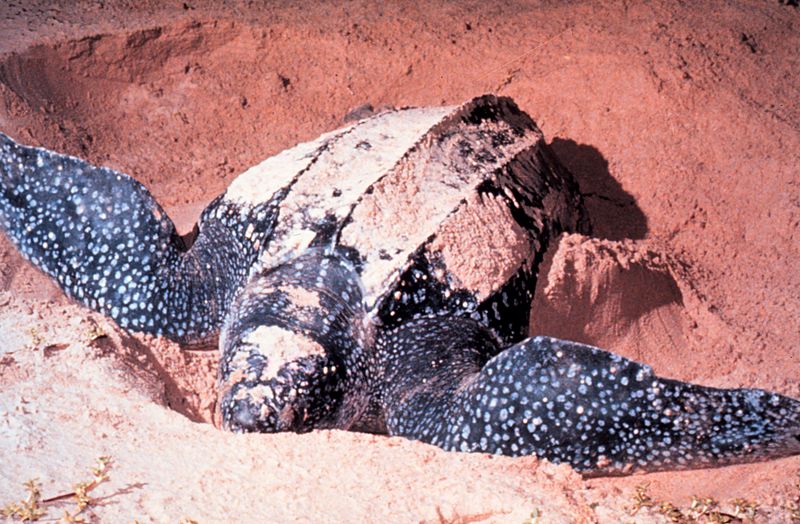Leatherback Movement Ecology Research Internship
Submitted: 2013-11-13 15:48:03
Contact: Dr. Helen Bailey and Dr. George Shillinger hbailey@umces.edu
Please contact and send your CV to Dr. Helen Bailey by 18th November 2013.
The Chesapeake Biological Laboratory (http://www.umces.edu/cbl), University of Maryland Center for Environmental Science through the Marine Estuarine Environmental Sciences Graduate Program (http://www.mees.umd.edu/).
Our project on leatherback turtles utilizes electronic tagging technologies combined with satellite and numerical oceanographic analyses and statistical modeling, to identify and characterize the dispersal and foraging habitats of adult and hatchling leatherback turtles in the Eastern Pacific Ocean. The identification of high-use turtle habitats at different life stages will help to inform measures aimed at mitigating human impacts on critically endangered leatherback turtles.
Relevant reading on our research:
Bailey, H., Benson, S.R., Shillinger, G.L., Bograd, S.J., Dutton, P.H., Eckert, S.A., Morreale, S.J., Paladino, F.V., Eguchi, T., Foley, D.G., Block, B.A., Piedra, R., Hitipeuw, C., Tapilatu, R.F. and Spotila J.R. (2012) Identification of Distinct Movement Patterns in Pacific Leatherback Turtle Populations Influenced by Ocean Conditions. Ecological Applications, 22: 735 – 747. This is featured on the front cover, which can be viewed at http://www.esajournals.org/toc/ecap/22/3.
Bailey, H., Fossette, S., Bograd, S.J., Shillinger, G.L., Swithenbank, A.M., Georges, J.Y., Gaspar, P., Strömberg, K.H.P., Paladino, F.V., Spotila, J.R., Block, B.A. and Hays, G.C. (2012) Movement Patterns for a Critically Endangered Species, the Leatherback Turtle (Dermochelys coriacea), Linked to Foraging Success and Population Status. PLoS ONE, 7: e36401, doi: 10.1371/journal.pone.0036401.
Shillinger, G.L., Bailey, H., Bograd, S.J., Hazen, E.L., Hamann, M., Gaspar, P., Godley, B.J., Wilson, R.P. and Spotila, J.R. (2012) Tagging through the stages: technical and ecological challenges in observing life histories through biologging. Marine Ecology Progress Series, 457: 165-170.
Shillinger, G.L., Di Lorenzo, E., Luo, H., Bograd, S.J., Hazen, E.L., Bailey, H. and Spotila, J.R. (2012) On the dispersal of leatherback turtle hatchlings from Meso-American nesting beaches. Proceedings of the Royal Society B, 279: 2391-2395.
Shillinger, G.L., Swithenbank, A.M., Bailey, H., Bograd, S.J.,Castleton, M.R., Wallace, B.P., Spotila, J.R., Paladino, F.V., Piedra, R. and Block, B.A. (2011) Vertical and horizontal habitat preferences of post-nesting leatherback turtles in the South Pacific Ocean. Marine Ecology Progress Series, 422: 275-289.
Shillinger, G.L., Swithenbank, A.M., Bograd, S.J., Bailey, H., Castleton, M.R., Wallace, B.P., Spotila, J.R., Paladino, F.V., Piedra, R. and Block, B.A. (2010) Identification of high-use internesting habitats for eastern Pacific leatherback turtles: role of the environment and implications for conservation. Endangered Species Research, 10: 215-232.
Bailey, H., Shillinger, G., Palacios, D., Bograd, S., Spotila, J., Paladino, F. and Block B. (2008) Identifying and comparing phases of movement by leatherback turtles using state-space models. Journal of Experimental Marine Biology and Ecology, 356: 128-135.
Shillinger, G., Palacios, D., Bailey, H., Bograd, S., Swithenbank, A., Gaspar, P., Wallace, B., Spotila, J., Paladino, F., Piedra, R., Eckert, S. and Block, B. (2008) Persistent leatherback turtle migrations present opportunities for conservation. PLoS Biology, 6: e171, doi: 10.1371/journal.pbio.0060171
Duties
We are looking for an M.S. student that would contribute to this project by analyzing satellite and acoustic telemetry data to increase our understanding of marine turtle movement patterns and processes.
Requirements
We are searching for candidates with interests in quantitative ecology, statistics and ecological modelling. Previous knowledge or research experience with tracking data, the software R or other statistics software, and GIS data analysis will be preferable.
Benefits/Costs
The student would be funded through a competitively awarded fellowship. The student would be based at the Chesapeake Biological Laboratory (http://www.umces.edu/cbl), University of Maryland Center for Environmental Science through the Marine Estuarine Environmental Sciences Graduate Program (http://www.mees.umd.edu/).
